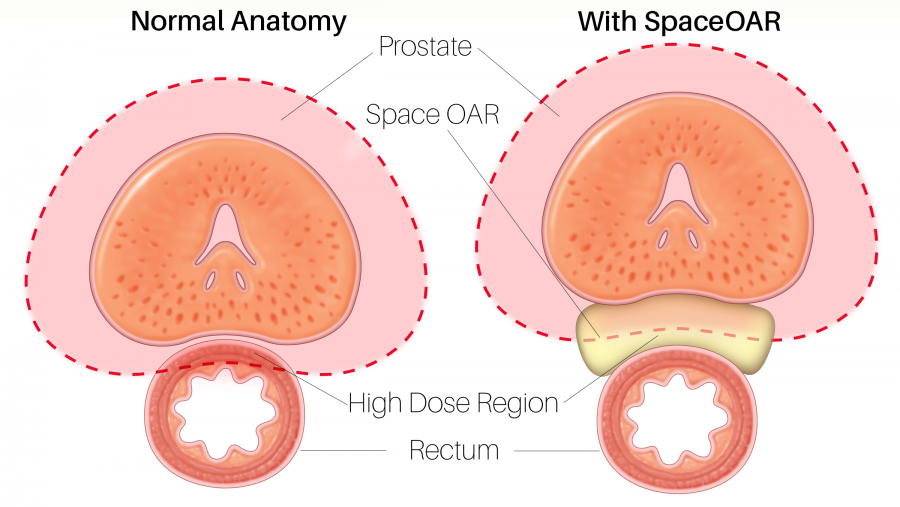This story is brought to you by Augmenix
According to the American Cancer Society, in 2018 over 164,000 men will be diagnosed with prostate cancer (1). For those men, treatment options range from surgery to remove the entire prostate, to radiation to target the cancer in the prostate, to ‘active surveillance’ — monitoring carefully over time for signs of disease progression. The quality of life issues that arise from surgery and radiation include diarrhea, rectal pain and bleeding, urinary leakage and loss of sexual function that can last for years.
For men that choose radiation therapy to treat their prostate cancer, there is an innovative product that can minimize side effects caused by the treatment. Because the prostate is located near the rectum, unintended radiation damage to the rectum and surrounding tissues can occur, leading to lifelong complications. In April 2015, a product called SpaceOAR® hydrogel became available for use during radiation treatment for prostate cancer. The gel acts as a protective spacer between the prostate and the rectum and has been clinically proven to reduce the risk of side effects from radiation treatment (2). In a prospective, randomized, multi-center clinical trial in the U.S., patients treated with SpaceOAR hydrogel prior to prostate cancer radiation treatment demonstrated bowel, urinary and sexual benefit through three years of follow-up. The study found that the patients who did not receive SpaceOAR hydrogel experienced a clinically significant decline in bowel, urinary, and sexual quality of life eight times more often than patients that received SpaceOAR hydrogel (2,3).
SpaceOAR hydrogel is placed in a minimally invasive outpatient procedure with local or general anesthesia. Patients can immediately resume their normal activities. The gel stays in place for approximately three months and is then naturally absorbed and cleared in the urine in about six months.

As of 2018, SpaceOAR hydrogel is used in 19 of the Top 20 Cancer Hospitals in the United States and has been used in over 25,000 patients worldwide. To learn more about SpaceOAR hydrogel or to find a Radiation Oncologist or Urologist in your area, please visit SpaceOAR.com.
-
“Key Statistics for Prostate Cancer | Prostate Cancer Facts.” American Cancer Society, www.cancer.org/cancer/prostate-cancer/about/key-statistics.html.
-
DA Hamstra, N Mariados, J Sylvester, et al. Continued Benefit to Rectal Separation for Prostate Radiation Therapy: Final Results of a Phase III Trial. Int J Radiat Oncol Biol Phys; 2017 Apr 1; 97(5): 976-985
-
DA Hamstra, et al. Sexual Quality of Life Following Prostate Intensity Modulated Radiotherapy (IMRT) with a Rectal/Prostate Spacer: Secondary Analysis of a Phase III Trial. Published online: July 19, 2017 Practical Radiation Oncology.



